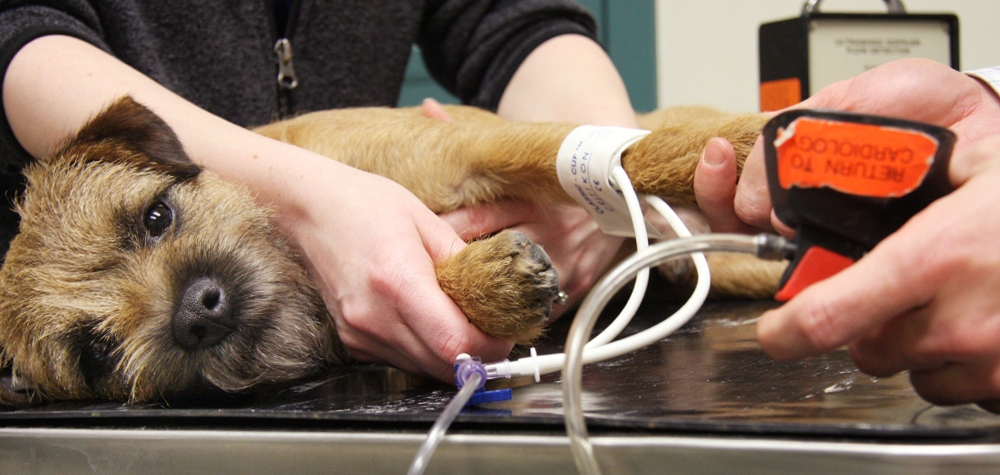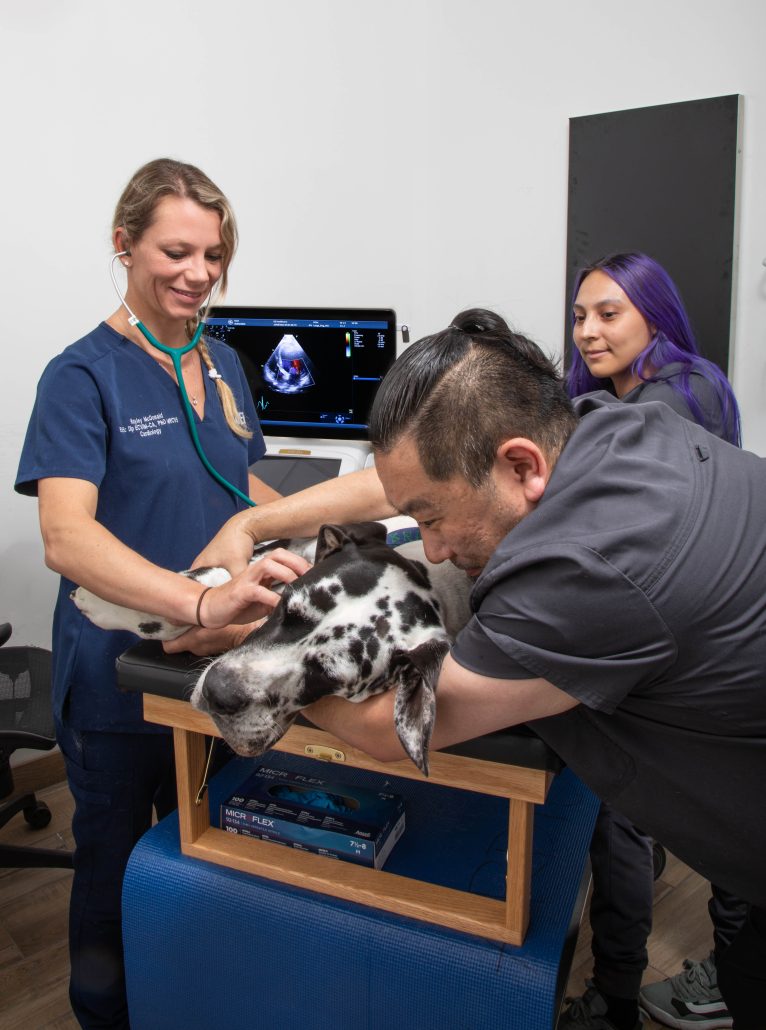What You Required to Learn About Veterinary Solutions: A Summary of Diagnostic Equipments and Procedures
Veterinary services play an essential role in keeping the health of family pets. Regular exams can expose surprise health worries early on. Numerous analysis tools and treatments, such as blood examinations and imaging strategies, provide important understandings right into an animal's health. Understanding these techniques is key for pet owners. What details diagnostic treatments are most frequently made use of, and exactly how can they affect a pet dog's treatment strategy?
Value of Regular Vet Check-Ups
While lots of pet owners might undervalue the importance of regular vet examinations, these visits are necessary for maintaining an animal's total health. Regular visits to the veterinarian allow for very early detection of potential wellness issues before they intensify right into significant problems. Regular examinations frequently include vaccinations, which are necessary for avoiding infectious illness that can significantly influence a pet's well-being. Additionally, these visits offer a chance for vets to examine the animal's weight, dental health and wellness, and overall condition, guaranteeing that the animal is flourishing. During these gos to, pet dog proprietors can additionally obtain beneficial suggestions on diet regimen, workout, and precautionary treatment tailored to their specific pet's demands.
Common Diagnostic Treatments in Vet Medicine
In veterinary medication, precise diagnosis is vital for efficient treatment. Usual diagnostic treatments include blood screening methods, progressed imaging modern technologies, and urinalysis, each playing a substantial duty in determining wellness issues. Recognizing these approaches improves the capability to supply proper take care of pet individuals.
Blood Testing Techniques
Blood screening strategies act as important diagnostic tools in vet medication, allowing veterinarians to assess the health of pets precisely. These techniques entail collecting blood examples to evaluate different elements, such as red and white blood cells, platelets, and biochemical markers. Usual tests include complete blood matters (CBC), which assess general health and spot infections, and biochemical panels, which examine organ feature and metabolic status. Additionally, serological examinations can identify particular conditions through antibody discovery. Blood screening is minimally invasive and gives important information that assists in detecting conditions, keeping track of wellness status, and examining feedbacks to treatments. Generally, these methods play an important duty in making sure perfect look after family pets and livestock alike.
Imaging Technologies Utilized
Analysis imaging innovations are important devices in vet medication, enhancing blood screening methods by giving aesthetic insights right into an animal's internal structures. Common imaging techniques consist of X-rays, which are useful for examining bone cracks and finding foreign items, and ultrasound, which allows for real-time visualization of soft tissues and organs. Magnetic resonance imaging (MRI) provides comprehensive images of complicated anatomical locations, specifically in neurological analyses. Calculated tomography (CT) supplies cross-sectional pictures, enhancing diagnostic precision for different conditions. Each of these innovations help veterinarians in detecting ailments, intending therapies, and keeping an eye on healing. By integrating imaging technologies, veterinary specialists can much better evaluate a pet's wellness and make notified choices concerning their care.
Urinalysis and Diagnostics
Urinalysis works as a critical analysis tool in vet medication, supplying important understandings into a pet's total health and assisting in the discovery of various problems. This non-invasive treatment evaluates urine examples to evaluate kidney function, hydration condition, and metabolic conditions. Usual components analyzed consist of specific gravity, pH levels, sugar, healthy proteins, and the existence of blood or bacteria. Abnormal searchings for can show problems such as urinary system tract infections, diabetic issues mellitus, or kidney disease. To boost diagnostic precision, urinalysis is often performed combined with various other tests, such as blood job and imaging research studies. Early detection through urinalysis can bring about prompt interventions, improving the prognosis for many vet clients. For that reason, it is an important facet of comprehensive veterinary care.
Comprehending Blood Examinations and Lab Analysis
Recognizing blood tests and laboratory evaluation is important in vet medicine as it aids in detecting various health and wellness problems in pets. Different types of blood examinations provide vital details about a pet's interior state, while analyzing lab results requires cautious factor to consider of many factors. This section will certainly check out the kinds of blood tests offered and the relevance of their results.
Sorts Of Blood Examinations
Blood examinations play a vital duty in veterinary medication, providing vital insights into a pet's health condition. Various kinds of blood tests are utilized, each offering different objectives. Total blood counts (CBC) examine total health and wellness and find problems such as anemia or infection. Biochemical profiles review body organ feature by gauging electrolytes and enzymes, offering insights right into metabolic wellness. Serological examinations identify specific antibodies or pathogens, aiding in the diagnosis of infections or autoimmune diseases. Blood typing assurances risk-free transfusions, while coagulation tests evaluate the blood's ability to embolisms, essential for medical treatments. These examinations collectively enhance diagnosis, treatment planning, and tracking of a pet's wellness, highlighting the significance of complete research laboratory evaluation in vet treatment.

Interpreting Laboratory Outcomes
A comprehensive analysis of laboratory results is essential for exact diagnosis and treatment in vet medicine. Analyzing lab results needs an understanding of normal recommendation ranges and the relevance of inconsistencies. Blood examinations can reveal numerous wellness signs, such as organ feature, electrolyte equilibrium, and the existence of infections. Vets have to take into consideration the whole medical image, consisting of the animal's history, physical exam findings, and any kind of signs offered. Variations in results may occur from aspects such as age, type, and underlying health problems. Laboratory outcomes must not be watched in seclusion but instead as component of an all-inclusive diagnostic strategy. Exact interpretation enables tailored therapy plans and better results for vet you could try here people.
Imaging Techniques: X-rays, Ultrasounds, and Beyond
Imaging strategies are essential devices in vet medication, giving crucial insights into the wellness and wellness of pets. Among the most typically used techniques are X-rays and ultrasounds. X-rays are important for visualizing bone frameworks, assisting vets determine fractures, tumors, or international items. This technique is fast and non-invasive, making it ideal for urgent situations.Ultrasounds, on the other hand, use acoustic waves to develop photos of soft tissues and body organs. This method is particularly useful for analyzing the heart, abdomen, and reproductive body organs, permitting veterinarians to assess problems like fluid accumulation or body organ abnormalities.Beyond X-rays and ultrasounds, advanced imaging methods such as computed tomography (CT) and magnetic resonance imaging (MRI) are significantly utilized in vet technique. These methods offer thorough cross-sectional photos, boosting the accuracy of diagnoses and treatment plans. CT Scans For Dogs. Overall, imaging techniques play a crucial duty in making sure reliable veterinary care
The Duty of Biopsies in Diagnosing Pet Health Issues
Accuracy in detecting health and wellness issues in family pets frequently rests on making use of biopsies, which provide clear-cut information concerning cells problems. A biopsy involves the elimination of a small example of tissue for exam under a microscope, permitting veterinarians to identify numerous conditions, consisting of infections, growths, and inflammatory conditions. This analysis tool is essential for comparing benign and malignant developments, guiding therapy decisions, and examining the intensity of a condition.Biopsies can be carried out making use of different techniques, such as needle ambition, incisional biopsies, or excisional biopsies, depending on the area and kind of tissue involved. The selection of approach might influence recuperation time and the quantity of tissue gathered. Eventually, the information amassed from a biopsy can cause targeted treatments, boosting end results for pet dogs encountering significant health challenges. Veterinarians highlight the relevance of this procedure in accomplishing precise medical diagnoses and reliable treatment plans.
Advanced Diagnostic Tools: Endoscopy and CT Scans

Advanced diagnostic tools, such as endoscopy and CT scans, play a necessary role in contemporary veterinary medication, using non-invasive techniques to imagine internal frameworks and detect numerous problems in pet dogs. Endoscopy includes making use of a versatile tube geared up with a cam, enabling veterinarians to examine the gastrointestinal tract and breathing system straight. This strategy can expose problems such as lumps, international bodies, or swelling, allowing targeted treatment plans.CT scans, on the other hand, utilize innovative imaging modern technology to develop in-depth cross-sectional photos of the body (Ultrasound For Dogs). This approach is specifically beneficial for examining complex frameworks like the mind, spinal column, and joints. By offering high-resolution images, CT scans aid vets in determining issues that may not be apparent with conventional radiography. Together, these advanced devices improve diagnostic precision, enhance treatment end results, and eventually add to far better overall pet dog health and wellness management

Interpreting Test Outcomes: What Pet Dog Owners Ought To Know
Recognizing examination outcomes can be a challenging task for family pet proprietors, specifically after advanced procedures like endoscopy and CT scans have actually been done. Translating these results calls for an understanding of medical terminology and a clear understanding of what the searchings for show about the family pet's wellness. Veterinarians commonly provide explanations, but the complexity of the outcomes can still cause confusion.Pet proprietors ought to actively participate in conversations with their vets, asking inquiries to clear up any type of uncertainties. It is vital to recognize normal versus unusual outcomes and the implications for the pet dog's treatment plan. Furthermore, acknowledging that some results may need additional testing or tracking can assist proprietors remain notified regarding their family pet's health and wellness trip. Eventually, a collective technique between pet dog proprietors and veterinary specialists cultivates far better wellness end results and boosts the general care experience for pet dogs.
Frequently Asked Inquiries
How Do I Choose the Right Vet Center for My Animal?
Choosing the see this here appropriate vet center includes researching local alternatives, evaluating credentials, visiting centers, and assessing team interactions (Cancer Veterinary Near Me). Focusing on referrals from trusted sources can assist guarantee the best treatment and environment for an animal's wellness demands
What Should I Do if My Animal Rejects to Go to the Vet?
When a family pet declines to visit the vet, it's a good idea to continue to be calm, use treats or toys to tempt them, and consider setting up a home check out if anxiousness continues. Patience and favorable reinforcement are vital.
Are There Telehealth Options for Vet Providers?
Telehealth alternatives for veterinary solutions are increasingly available, enabling family pet proprietors to seek advice from vets remotely. These services make it possible for discussions regarding health issues, guidance on minor conditions, and follow-ups without needing to go to a facility.
How Usually Should My Family Pet Have Dental Check-Ups?
The frequency of dental check-ups for pet dogs normally depends upon their age image source and type. Generally, veterinarians advise yearly dental assessments, although some pets might require even more constant sees to maintain excellent oral health.

What Are the Expenses Connected With Vet Diagnostics?
The prices associated with veterinary diagnostics can vary commonly, commonly ranging from standard tests like blood job to advanced imaging strategies. Elements influencing costs consist of the clinic's place, equipment made use of, and specific examinations required for every pet dog. Veterinary services play a crucial role in preserving the wellness of pets. While several pet dog proprietors might take too lightly the importance of routine veterinary check-ups, these appointments are vital for keeping a pet's overall health. Additionally, these consultations give an opportunity for veterinarians to examine the pet's weight, oral health, and overall problem, making sure that the pet dog is thriving. Precision in diagnosing health and wellness problems in pet dogs often hinges on the use of biopsies, which provide conclusive information about tissue irregularities. Furthermore, recognizing that some results may call for further screening or monitoring can help owners stay informed about their family pet's wellness trip.